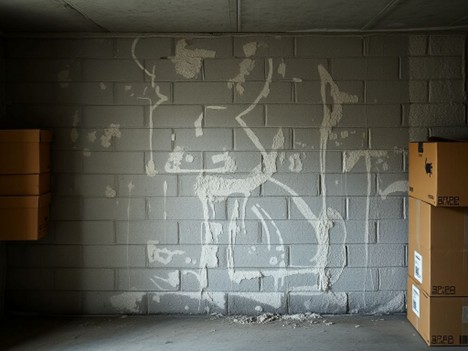How to Choose the Right Sump Pump for Your Basement
When water enters a Bronx basement, it doesn’t just soak concrete. It soaks stress.
That slow drip? It’s not just water. It’s worry.
Basements across the Bronx face moisture risks for all kinds of reasons. Some homes sit near high water tables. Others have foundations that predate vinyl siding—or even World War II. Some just haven’t been updated to handle the kind of downpours we get now.
And yet, many homeowners hesitate. Not because they don’t care—but because the options are overwhelming. Submersible, pedestal, battery backup, horsepower levels… it all blurs together.
So let’s simplify. This guide walks you through what matters—without turning into a tech manual. You’ll get a clearer picture of pump types, understand how to match them to your space, and know what to expect from a reliable installer.
No fluff. Just straight talk. And peace of mind that doesn’t come with a flooded floor.
1. Why Sump Pumps Matter in Bronx Basements
Here’s the thing—moisture rarely announces itself with a dramatic flood. Most of the time, it creeps in quietly. A faint smell. A stain that spreads. A tiny patch of mold behind a box of winter coats.
In parts of the Bronx, homes are stacked tightly, with limited runoff space. Backyards? Sometimes more like patios. Rainwater doesn’t always have a clean exit, especially when drains are shared or sloped the wrong way.
Some basements are finished. Some are just storage. All are vulnerable.
Left unchecked, that moisture?
- Warps wood.
- Feeds mildew.
- Makes HVAC repairs a guessing game.
A professional sump pump installation in Bronx homes can serve as a smart, long-term defense. It’s not just about solving emergencies. It’s about preventing them. Quietly, efficiently, and ideally—before you even notice something’s off.
2. Understanding Sump Pump Types
Not all pumps are created equal. And honestly? That’s a good thing.
Submersible Pumps
They live in the pit. Out of sight. Underwater.
- Quieter.
- Often stronger.
- Less in-your-face if your basement is a lounge, not a laundry room.
But: harder to reach if something goes sideways.
Pedestal Pumps
They perch above the pit like a little lookout.
- Easier to service.
- Built to last in some cases.
- A bit louder. More visible.
Perfect for utility spaces or basements you rarely spend time in.
Backup Systems
Because storms don’t care if the power’s out.
- Battery backups kick in during outages—especially useful when heavy rains and blackouts overlap.
- Water-powered options exist too, depending on plumbing setup. Quietly clever, if compatible.
Primary vs. Secondary Pumps
- Primary: Does the daily heavy lifting.
- Secondary: There when the main one can’t keep up or calls in sick.
Each type has pros and trade-offs. The best choice? It depends on your basement’s layout, your comfort level, and how often water tries to sneak in.
3. Matching the Pump to Your Basement Conditions
This part’s crucial. Choosing a pump isn’t just about specs. It’s about fit. Like tailoring a suit—you need the right cut for your structure.
Home Age & Layout
Some Bronx homes date back decades. Others are part of newer developments with different insulation and plumbing standards. That matters. Older setups might need a custom pit or a smaller pump with flexible fittings.
Square Footage & Water Behavior
A wider footprint collects more runoff. If water likes to linger in one corner after storms, your installer should take that into account when recommending horsepower—somewhere in the 1/4 HP to 3/4 HP range, typically, though that depends on volume and flow rate.
Previous Water Intrusion
Even light moisture buildup means it’s time to get ahead of future damage. Think of it as a warning light on your dashboard—not a reason to panic, but not one to ignore.
Sound Sensitivity
Watching movies downstairs? Hosting guests in a converted rec room? Submersible wins for stealth. Pedestal pumps, on the other hand, hum a little more—but are quicker to troubleshoot.
Sump Pit Size—The Underrated Detail
Smaller pits trigger pumps more often. That constant cycling? It wears systems down. Larger pits hold more water during heavy rains, giving the pump breathing room. But size isn’t just about diameter—it’s also about depth, discharge capacity, and even the type of soil surrounding the foundation.
The more accurately your system is matched, the better the performance. It’s why homeowners seeking sump pump installation in Bronx, NY often benefit from a customized evaluation—not just a catalog pick.
4. Choosing the Right Professional Installer in the Bronx
Let’s be real—installing a sump pump isn’t like picking a fridge. You can’t just read a review and plug it in.
You’re trusting someone with the part of your home most people ignore until something goes very wrong.
What to Look For:
- Clear communication—especially when explaining pump sizing and basement variables.
- Familiarity with local codes and housing quirks.
- Willingness to walk the space and assess more than just the lowest point on the floor.
- Transparent estimates with line items, not mystery charges.
- Proof of license and insurance (yes, always ask).
What Signals Confidence:
- Asking about your basement’s purpose—storage? living space? laundry zone?
- Checking drainage paths, not just the pit.
- Recommending long-term solutions, not quick installs.
This isn’t about dodging bad contractors—it’s about recognizing the good ones before you even sign the contract. That’s why so many residents choose pros who specialize in sump pump installations in Bronx, NY and understand the borough’s specific challenges.
5. Prep Steps Before Scheduling Your Installation
Okay, so you’ve made the decision. What now?
Double-Check Where the Water’s Going
A sump pump is only half the equation. Where that water ends up? Just as important. Discharge lines should move water away from the foundation—not dump it four feet from your back wall.
Get Familiar with the Estimate
Look for these terms:
- Type and model of pump
- Battery or alert systems
- Labor, materials, and concrete work
- Optional electrical hookup by a certified electrician
The more detailed the quote, the fewer surprises later.
Installation Day Snapshot
Expect a bit of noise. Some dust. Possibly concrete cutting. A good crew will walk you through what’s being done—and why. Before they leave, they should test the system and explain basic indicators or alarms.
The goal? You walk away knowing your basement’s safer—and how to spot if something ever changes.
Conclusion: There’s No One-Size-Fits-All Pump—And That’s the Point
The right sump pump does more than move water. It removes doubt.
But only if it’s matched to your home—not a general idea of what “should work.” Every basement tells a different story. Yours might be quiet now. But if that story ever shifts, will your system be ready?
Here’s what matters most:
- Know your pump types and why they exist
- Pay attention to layout, past water patterns, and pit capacity
- Work with someone who doesn’t just install—they assess, explain, and stand behind their work
Bottom line? A good sump pump system doesn’t just protect your home. It protects your peace of mind.
FAQs
Q: How do I know if my Bronx basement needs a sump pump?
A: If it smells musty after rain, if your walls feel cold and damp, or if you see mineral deposits near floor edges, your basement may be trying to tell you something. You don’t need a flood to need protection.
Q: Is a battery backup sump pump necessary?
A: If your area experiences power outages during storms—even occasionally—having a backup can be the difference between a minor inconvenience and a major mess. It’s about adding a safety net.
Q: How long does a professionally installed sump pump last?
A: That depends. Many models last around 7 to 10 years, give or take, with routine maintenance. But usage frequency, water volume, and installation quality all play a role. Think of it like a furnace—it lasts longer when installed correctly and checked regularly.
FUQs (Frequently Unasked but Crucial Questions)
Q: Could my finished basement hide water damage I can’t see?
A: Absolutely. Behind drywall, under carpets, beneath shelves—moisture can hide for years. Just because you don’t see it doesn’t mean it isn’t spreading quietly.
Q: Do sump pumps increase home resale value?
A: They don’t always add direct dollars—but they do add confidence. Buyers love seeing proactive maintenance, especially in areas prone to storms or moisture.
Q: Can the wrong pump size actually cause flooding?
A: Yes. A pump that’s too small can’t keep up. One that’s too large may short-cycle, wearing itself out. It’s not just about size—it’s about balance.

